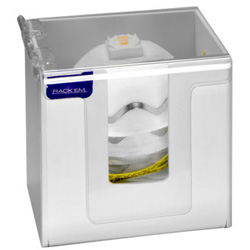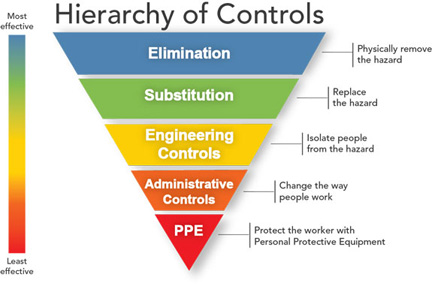| The Home page of ILPI's Safety Data Sheet (SDS) Resource, the leader in SDS information since 1995! | |
| The history and philosophy behind this resource. | |
| A curated collection of books and reference materials concerning Safety Data Sheets and closely related topics. | |
| Paste your plain text SDS into the SDS-Demystifier, and it will be converted into a hypertext-enriched document with links to detailed explanations of each key term. | |
| An extensive list of frequently asked questions about Safety Data Sheets including regulations, content, compliance, and more. | |
| A humorous take on Safety Data Sheet jargon. Fill in the blanks on our entry form to generate a personalized Unsafety Data Sheet to share with your coworkers. | |
| Since 1995, we've maintained this massive curated list of the best places to find Safety Data Sheets on the Internet. | |
| You are here! Way more than a glossary, this hypertext-enhanced resource covers hundreds of SDS-related terms and expert knowledge. Each entry includes both the SDS relevance and links to additional authoritative resources. | |
| Archived results of Safety Data Sheet related polls taken by some of our millions of site visitors | |
| The OSHA regulations behind SDS regulations, including the inspection guidelines and over 400 official interpretations letters under the Hazard Communication Standard | |
| Commercial suppliers of SDS authoring and management software as well as cloud compliance services. | |
| Commercial companies that will create SDS's for your specific needs as well as SDS translation companies. |

Safety signs, banners, and scoreboards? Get yours at Safety Emporium!
Definition
Personal Protective Equipment (PPE) includes all clothing and other work accessories designed to create a barrier against workplace hazards. Examples include safety goggles, blast shields, face shields, hard hats, hearing protectors, gloves, respirators, aprons, and work boots.
Additional Info
PPE should not be used as a substitute for engineering, work practice, and/or administrative controls to prevent exposure to hazardous chemicals. For example, a respirator is not meant to be worn by an assembly line worker during his/her entire work shift; other methods such as a ventilation system or replacement of hazardous substances/processes should be utilized. However, PPE can work in conjunction with such preventative measures or when such controls are not possible.
Also keep in mind that PPE protects only the user - it does nothing to remove the hazard from the workplace. For example, a respirator may help protect the wearer from toxic fumes, but does nothing to protect others in the vicinity.
In that context, in March 2021 the US EPA announced that if a review of a new chemical under TSCA found that the substance poses a potential unreasonable risk to workers, it would consider the possibility that necessary safeguards such PPE might not be provided as a "reasonably foreseen" condition of use, and mandate additional actions as appropriate.
Some of the most important OSHA PPE regulations for those who work with chemicals include.

Make your PPE readily available with safety dispensers from Safety Emporium.
- 29 CFR 1910.132 PPE: General Requirements. Each employer must perform a written hazard assessment, select appropriate PPE to protect workers, and a maintain a written record indicating that all such employees have been properly trained in the following before performing any job task requiring PPE:
- When PPE is necessary.
- What PPE is necessary.
- How to properly put on, remove, adjust, and wear PPE.
- The limitations of the PPE.
- The proper care, maintenance, useful life and disposal of the PPE.
- 29 CFR 1910.133 PPE: Eye and Face Protection. The employer shall ensure that each affected employee uses appropriate eye or face protection when exposed to eye or face hazards from flying particles, molten metal, liquid chemicals, acids or caustic liquids, chemical gases or vapors, or potentially injurious light radiation.
- 29 CFR 1910.134 PPE: Respiratory Protection. In any workplace where respirators are necessary to protect the health of the employee or whenever respirators are required by the employer, the employer shall establish and implement a written respiratory protection program with worksite-specific procedures.
- 29 CFR 1910.138 PPE: Hand Protection. Employers shall select and require employees to use appropriate hand protection when employees' hands are exposed to hazards such as those from skin absorption of harmful substances; severe cuts or lacerations; severe abrasions; punctures; chemical burns; thermal burns; and harmful temperature extremes.
Additional standards cover items such as hearing protection, foot protection etc. Many of OSHA's other standards require the use of PPE.
With few exceptions, such as prescription safety glasses and safety-toe boots, OSHA requires employers to pay for personal protective equipment when it is used to comply with OSHA standards. See Final Rule 72:64341-64430 dated Nov 15, 2007.

Get your PPE such as made in USA NIOSH-approved N95 masks from Safety Emporium.
Books Available
NOTE: We may collect a share of sales or other compensation from the links in the following list:
- "Personal Protective Equipment for Chemical, Biological, and Radiological Hazards: Design, Evaluation, and Selection", hardcover, 348 pages, 2012. Estimated price $147.20. Info and/or order .
- "Quick Selection Guide to Chemical Protective Clothing, 7th Edition", Paperback, 304 pages, 2020. Estimated price $66.71. Info and/or order.
- "Chemical Protective Clothing, 2nd Edition", hardcover, 530 pages, 2003. Estimated price $66.58. Info and/or order .
- "Aid for Decontamination of Fire and Rescue Service Protective Clothing and Equipment After Chemical, Biological, and Radiological Exposures.", Paperback, 110 pages, 2013. Estimated price $12.71. Info and/or order .
- "Industrial Hygiene Control of Airborne Chemical Hazard, 2nd Edition", Hardcover, 718 page, 2019. Estimated price $149.48. Info and/or order.
SDS Relevance
OSHA requires that Section 8 (exposure controls/personal protection) of Safety Data Sheets list information about appropriate PPE for each substance. Pay careful attention to these as not all PPE is appropriate at all times. For example, certain gloves will do little to protect you from certain chemicals; see the glove selection guide links below for more information. Likewise, an organic vapor cartridge respirator will be useless at protecting you from an atmosphere deficient in oxygen.
In addition to using PPE appropriately, remember that every piece of PPE has limitations. For example, gloves may develop small holes and respirator cartridges generally do not indicate when they need replacement. Even appropriate PPE does not provide a 100% guarantee of safety.
Remember, the preferred methods for reducing chemical exposure, in order of general effectiveness, are illustrated in this diagram:

Specifically, these steps are:
- Eliminate or remove the hazard.
- Substitution of less hazardous materials or processes.
- Engineering controls
- Administrative controls
- Personal protective equipment (PPE)

Your employees can stay informed and comply with OSHA regulations with SDS information stations and compliance products from Safety Emporium.
Further Reading
- NIOSH has a great PDF file you can download titled A Guide for Evaluating the Performance of Chemical Protective Clothing (1.5 Mb).
- OSHA Technical Manual: Chemical Protective Clothing covers selection, usage, decontamination, training and more.
- OSHA publication 3151, Assessing the Need for Personal Protective Equipment: A Guide for Small Business Employers is a 189 Kb PDF file.
- OSHA's page on Payment for Personal Protective Equipment.
- OSHA's Personal Protective Equipment Fact Sheet (287 K PDF download).
- A quick rundown on the OSHA Subpart E Personal Protective and Life Saving Equipment requirements in the construction industry.
- Glove Selection and Usage at the University of California, San Diego. Includes info about latex allergies and more.
- Chemical Application & Recommendation Guide for gloves at Ansell Healthcare, the world's largest manufacturer of protective gloves and clothing.
- Review of the Performance, Selection, and Use of Gloves for Chemical Protection in ACS Chem. Health Saf. 2022, 29(1), 39-48 (institutional access required).
- The U.K. HSE's page devoted to Personal Protective Equipment at Work.
- Podcast From A Nobel Prize Laureate on The Loss of Sight In One Eye Due To A Cryogen Accident, one that could have been avoided with PPE.
- Chemical and Engineering News article on recommendations and how to choose splash goggles.
- Wear Your Safety Goggles at the journal Science.
- Substitution of hazardous chemicals at OECD includes a 2021 report Guidance on Key Considerations for the Identification and Selection of Safer Chemical Alternatives.
Technical articles on glove testing:
- Improving Chemical Resistance Testing for Gloves at Lab Manager.
- Glove permeation of chemicals: The state of the art of current practice, Part 1: Basics and the permeation standards from J Occ and Env Hygiene 2019, 16(12) pp 827-839 (institutional access required).
- Glove permeation of chemicals: The state of the art of current practice. Part 2. Research emphases on high boiling point compounds and simulating the donned glove environment from J Occ and Env Hygiene 2020, 17(14) pp 135-164 (institutional access required).
See also: action level, administrative controls, engineering controls, HMIS, permissible exposure limit.
Additional definitions from Google and OneLook.